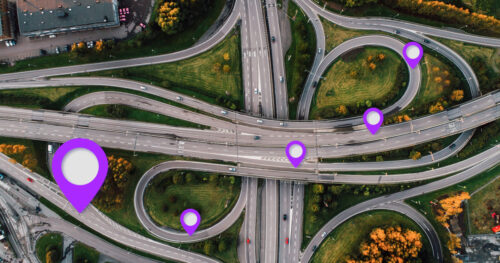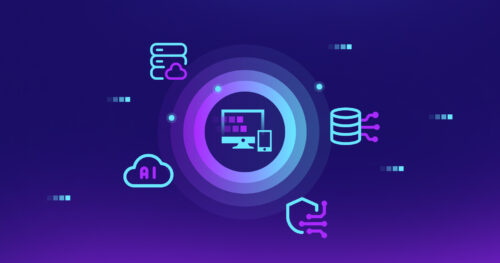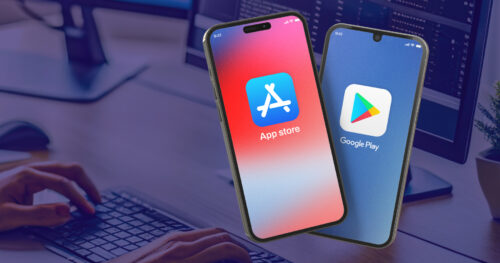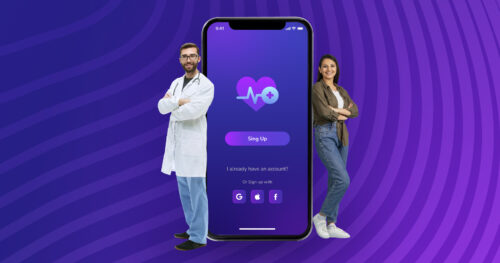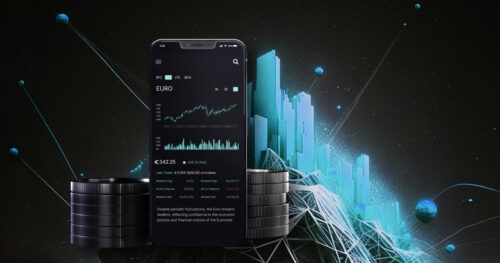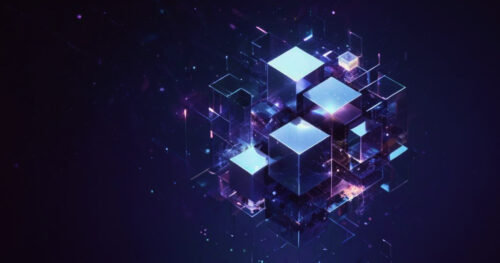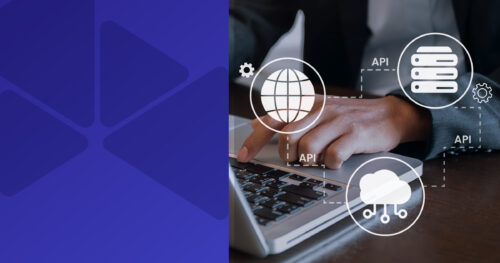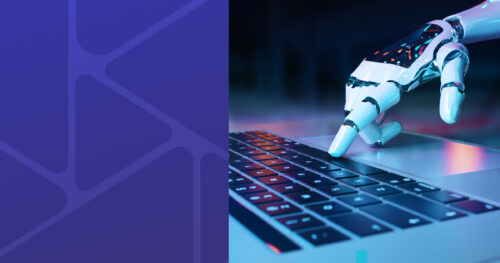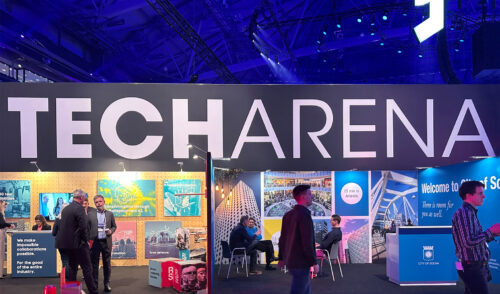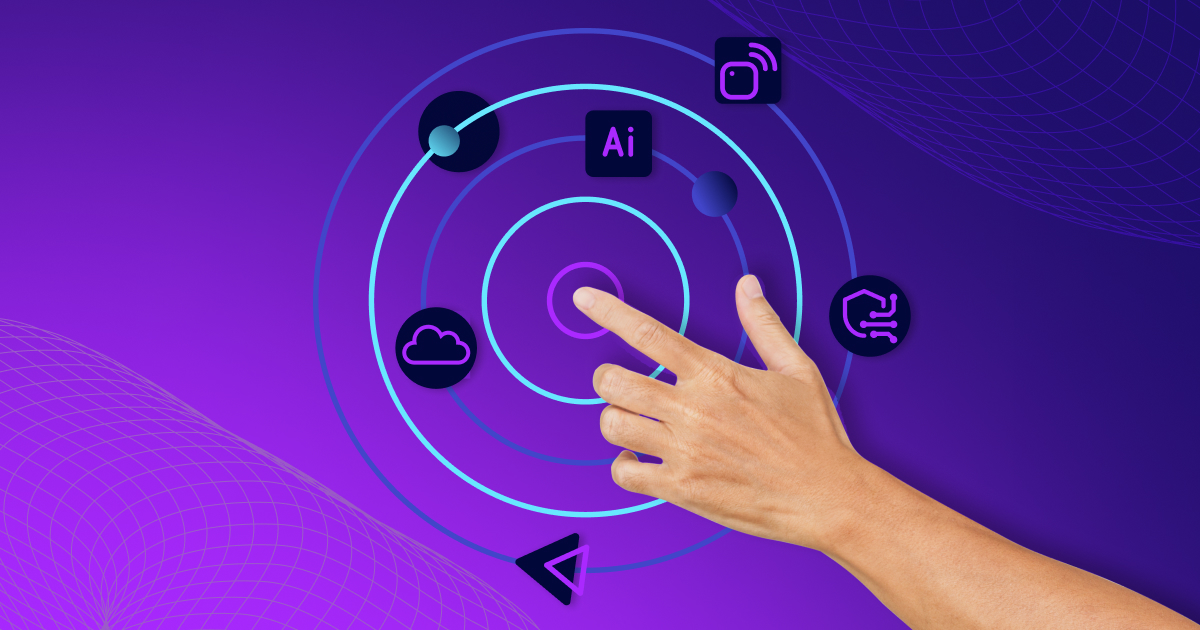The human resources domain is becoming more important and more complex, focusing on many diverse aspects of employer-employee relationships. Companies are heavily investing in digital transformation in HR, aiming to streamline and enhance processes, automate operations, get data-driven insights and improve decision-making. Statista predicts annual global revenue for HR tech will increase to $91.8 billion by 2026. DigitalMara has collected a list of the emerging HR technology trends. Understanding these will help in the development of custom HR software solutions.
HR professionals are responsible for a wide range of tasks, including recruitment and onboarding, employee experience and relations, laws and compliance, performance management, payroll, benefits administration, and more. There is a wide variety of software tools designed to perform these tasks. Here are some basic systems:
| System | Function |
| Applicant tracking system (ATS) |
Facilitates recruitment and hiring by managing the collection, organization, and tracking of job applicants. It’s used for creating and publishing job descriptions, screening resumes, application management, storing candidates’ resumes, interview scheduling, reporting and analytics. Examples: Automated recruitment software leverages automation and AI to handle various stages of recruitment, including job posting, candidate sourcing, resume screening, and initial interview scheduling. CRM (Candidate relationship management) software is used to build and manage relationships with potential job candidates through storing and organizing candidate information, communication history, and engagement activities. |
| Onboarding solution | Streamlines and automates employee onboarding within an organization. It’s used for document management, administrative tasks, employee training and orientation. |
| Core HR management |
Assists with foundational processes and functionalities of the HR department. It’s the central hub for storing, organizing, and retrieving critical employee data through the entire employee lifecycle, from recruitment and onboarding to development, performance management, and offboarding. Also, it’s used to monitor working hours, attendance, handle employee requests and other tasks. Example: Custom employee management software handles various aspects of workforce management and includes modules such as HR administration, payroll processing, time and attendance tracking, performance management, and employee communication tools. |
| Performance management | Helps to track employee performance and identify areas for improvement, setting goals, conducting reviews, measuring progress and providing feedback. |
| Learning and development | Supports employee learning, skill development, and professional growth. It’s used to facilitate planning, delivery, tracking, and management of educational and training programs within an organization. |
| Payroll processing | Automates payroll calculations, tax deductions, and other financial aspects of employee compensation, ensuring timely and accurate payments. |
| Employee self-service | Provides employees access to all HR-related content; allows them to enroll, manage their personal information, and submit requests. |
| Workforce analytics and reporting |
Provides data insights and analytics to identify trends, assess the impact of HR initiatives, support strategic decision-making and optimize workforce management. Examples: Employee engagement software is used to measure the level of involvement, satisfaction, and productivity of employees within the company through surveys, feedback and performance analytics. DEI analytics software is used to measure, track, and analyze data related to diversity, equity, and inclusion within their workforce through demographic reporting, pay equity analysis, representation metrics, and employee engagement data specific to DEI initiatives. |
| Benefits administration | Helps to efficiently handle various aspects of benefits administration (health insurance, retirement plans, and other perks) including enrollment, communication, compliance, and reporting. |
Large enterprises and mid-size companies with high load have started to implement cloud-based HR platforms that are designed to centralize, improve and streamline all HR functions and help provide a seamless experience for both HR professionals and employees. Cloud technologies make it possible to transform HR legacy systems, unite disparate components, or build a new system from scratch.
Cloud solutions for HR are scalable, easier to maintain and update, and have a reliable level of security. They store all HR-related data in a centralized and secure cloud environment and are smoothly integrated with other business systems. They provide access from anywhere, enabling remote work and global workforce management. Security is achieved using robust encryption, secure access controls, regular security audits, compliance with data protection regulations, and disaster recovery capabilities.
Cloud technologies, Artificial Intelligence and Machine Learning are included in modern HR software development, offering the opportunity to improve current functionality and create new abilities. Digital transformation in HR involves a combination of strategy and technology, and for 2024 covers the following areas:
- Advanced analytics and data reporting capabilities, including predictive analytics powered with AI.
- AI and ML capabilities for intelligent recruitment processes, and personalized learning and development recommendations.
- Automation of repetitive and rule-based HR tasks, improving efficiency and reducing errors.
- Enhancing the employee experience through hyper-personalization, digitalized onboarding, better communication, and a transparent and efficient learning and development system.
- Support of DEI presents tools for tracking and analyzing diversity metrics, mitigating biases in recruitment, and fostering an inclusive workplace culture.
- Mobile platform versions support a more flexible and remote-friendly working environment, giving employees and HR professionals access to HR services and information on the go.
- Support of mental health initiatives includes well-being assessments, resources, and features that promote work-life balance.
Technology trends for HR software development
As mentioned above, HR encompasses a wide range of functions and needs software tools and solutions to support them. Technologies listed below enhance the processes involved in recruitment, talent management, onboarding, and employee development, and also improve employee engagement and experience.
Chatbots
Chatbots in HR services can perform a wide range of functions. They are able to simplify many activities and improve the employee and candidate experience. AI virtual assistants can offer 24/7 support, handle routine HR queries, answer common questions, recommend learning resources, conduct surveys, improve communication and even conduct preliminary interviews with candidates. Chatbots are becoming smarter and provide more opportunities for:
- Personalization, tailoring responses based on individual employee profiles and preferences.
- Integration with other HR systems, for direct access to employee data and the ability to update it.
- Multilingual capabilities, for smooth communication in various languages.
- Emotional intelligence, to better understand and respond to the emotional state of employees.
- Voice-activated assistants, enabling employees to interact using voice commands for a hands-free experience.
- Continuous learning from interactions to improve their performance and provide more accurate and relevant responses over time.
Smart search for job candidates
Talent acquisition is essential for the success and productivity of any business. Technologies make it possible to streamline and enhance the search for potential candidates. Embedded into automated recruitment software, AI algorithms can carry out a variety of tasks, from accurate and relevant sourcing and screening of candidates to managing communication and assessing candidates more effectively. Search is carried out through keyword matching and semantic analysis. Skills and experience are compared to the job requirements.
With advanced tools, recruiters can conduct the search for potential candidates across multiple platforms such as job boards, social media, and professional networks, and then identify and rank candidates based on their skills, experience, and fit for a specific role. AI allows for searching and analyzing a far greater number of resumes, and does it much faster. Smart screening ensures that only the best candidates are shortlisted for further assessment. Meanwhile, it can help decrease unconscious bias and employ principles of diversity, equity and inclusion (DEI) in the recruitment process, ensuring that the candidate pool is diverse, representative and highly qualified.
GenAI
AI tools are versatile and offer HR teams a number of applications to perform functions faster and more precisely. Generative AI provides additional opportunities and empowers recruitment and other HR operations, primarily by helping to create various kinds of content, such as comprehensive and appealing job descriptions and interview questions based on predefined criteria, learning and training materials, onboarding modules, surveys, newsletters, and announcements for employees and candidates.
Chatbots in HR services powered by generative models can: engage with candidates during the initial stages of recruitment, answering queries, providing information about the company, and conducting preliminary assessments; assist during onboarding, answering questions related to the onboarding process and company policies, guiding new employees through procedures and creating an immersive and personalized onboarding experience; and become a virtual assistant on employee self-service applications, helping with all available tasks.
Data analytics and predictive insights
With proper insights, HR professionals can make data-driven decisions about recruitment, training, talent management, employee performance and other HR functions. The modern technology approach makes reporting more accurate, volumetric and diverse. HRs can track, measure and analyze a lot of indicators and build better strategies based on that. The main trends in data analytics involve:
- Integration of AI and ML – technologies that allow you to process vast amounts of data, uncover patterns, make predictions about employee behavior, and optimize HR operations. With help in predicting employee attrition, HRs can take proactive steps to retain valuable talent.
- Employee experience analytics – this involves measuring and analyzing data at various touchpoints of an employee’s journey within the company. HR can identify areas of concern, enhance onboarding and workforce management processes, and identify trends affecting employee satisfaction. Such analytics can be a part of employee engagement software.
- Diversity, Equity, and Inclusion (DEI) analytics – this involves analyzing data related to recruiting, promotions, pay equity, employee experiences and more, ensuring that that company maintains a diverse, equitable and inclusive environment. HRs can track metrics and address disparities.
- Real-time analytics and decision support – this serves to provide immediate insights, allowing HRs to take data-driven action promptly. HRs can identify potential employee issues, monitor the impact of a new HR initiative, and adjust workforce planning in response to changing market conditions.
- Employee well-being analytics – this involves measuring and analyzing well-being metrics. HRs can track the effectiveness of implemented initiatives, discern positive and negative patterns, and enhance the company’s well-being strategy.
Employee self-service
Employee self-service (ESS) solutions allow employees to handle many HR needs on their own. They can update personal information, emergency contacts, pay stubs and tax forms, view work schedules, request time off, and track attendance, enroll in benefits, rewards and training programs, leave various requests, and access company news, announcements, contacts and performance review summaries.
ESS reduces the administrative burden on HR professionals, saves time and costs, improves communication between the company and its employees, and provides employees with accurate, real-time information and round-the-clock support. Beyond basic features, you can add responsive UI optimized for mobile devices, an AI chatbot for intelligent and interactive assistance, voice-activated interfaces, integration with collaboration tools such as Microsoft Teams, Slack, and others, gamification elements to enliven interactions, and features related to mental health support.
Diversity, equity, inclusion and belonging (DEIB) solutions
Companies are making DEIB principles part of their culture and mission. Specialized software is eager to support these initiatives through management, measurement, and promotion. It can track diversity metrics like gender, ethnicity, age, and other demographic data; identify and address biases in hiring processes, performance evaluations, and other HR functions; and analyze and address pay equity gaps. DEI solutions are especially important for recruitment, ensuring that candidates are sourced as widely as possible and that a fair and inclusive process is followed.
Technology improvements are aimed at increasing transparency and reducing bias. AI can more effectively identify and eliminate biases, track metrics, inform about non-compliance, make reports more transparent, and provide better insights for strategic DEI planning. Another aspect is developing e-learning modules that address diversity and inclusion topics, cultural competence, and respectful communication.
AR & VR applications in corporate learning
AR and VR technologies have become common in corporate learning and training thanks to their ability to create immersive and interactive experiences. These can be realistic simulations that replicate the work environment to train for high-risk or complex scenarios, used in training soft skills like communication and leadership; in language and cultural training simulations; or to replicate customer interactions and sales scenarios. VR also can create virtual tours of the workplace, allowing new employees to explore the office or facility.
AR enhances traditional learning materials by adding interactive elements. Employees can use AR-enabled devices to scan images or objects and access additional multimedia content, such as videos, quizzes, or 3D models. Such an approach to education increases engagement and retention of employees, improves absorption of material, and helps new workers acquire skills faster and more effectively.
Employee well-being and mental health
Good companies set their employees’ well-being and mental health as a priority in their workforce strategies. With the help of specific tools, HR professionals can create a supportive environment for all employees:
- Web portal for well-being resources, including articles, videos, and guides tailored to individual preferences and needs. Employees can access content that promotes physical, mental, and emotional health, fostering a culture of self-care and resilience.
- With mood-tracking and feedback-collecting software, employees can regularly check in on their well-being by logging their mood, stress levels, and overall satisfaction. HRs get valuable insights into the collective emotional health of the workforce and can develop well-being initiatives.
- With AI-driven stress prediction, HRs can analyze various factors such as workload, project deadlines, and personal preferences to predict and identify potential sources of stress for employees — and take corresponding measures such as personalized support, workload adjustments, and access to mental health services.
- Virtual mental health support services provide employees with easy access to counseling, therapy sessions, or mental health workshops.
Digital ecosystem for remote work
The traditional office model has been challenged and changed by various factors, such as technology advancement, changing employee preferences and the pandemic. Employees now have the opportunity to work remotely while traveling and living in various locations around the world, while companies need to create digital workplaces and a remote work culture that meets security and quality requirements.
The remote-work digital ecosystem is a set of tools and platforms designed to provide smooth work processes and communication. It integrates various software solutions, ensuring seamless data flow and collaboration between different applications. The key components are communication platforms, collaboration suites and virtual workspace platforms. Also, for creating a better experience, AI personal assistants, virtual workshops, and mentorship programs can be used.
Remote employees access company data and resources from various locations. That makes processes vulnerable to cyber threats. Therefore, robust cybersecurity and data privacy measures are crucial. Companies have to protect sensitive information and ensure the security of remote work environments. This can involve advanced authentication methods, encryption protocols, and AI-driven threat detection.
Summary
The DigitalMara team has vast experience in developing different types of HR software solutions, including personnel tracking, payroll, benefits management, recruiting, onboarding, learning and development, and more.
Here some examples of developed custom HR software solutions:
- Recruitment
A proprietary insights platform with a unique analysis algorithm allows managers to conduct assessments of companies and their leadership to identify and highlight potential drivers for success. This also helps in the search for new leaders who will perfectly fit the given company’s needs, based on their experience and achievements.
- DEI
The insights platform allows companies to facilitate diversity and inclusive recruiting. It uses AI to make HR data and decision-making intuitive and helpful. DEI metrics are embedded into analytics to give a more complete understanding of the workforce. The platform can easily be integrated with ATS and other HR systems to analyze and forecast data pertaining to people and provide recommendations. It also connects a company to top candidates from diverse talent pools, shows where candidates fall out of the hiring funnel, and illuminates potential action steps.
- Payroll
The management platform unifies all activities for the well-being of employees, including the invoicing and payroll system. Automating payroll calculations, tax compliance, and direct deposit processes, it minimizes errors and enhances efficiency. The platform offers a comprehensive benefits administration system, enabling HR professionals to manage employee benefits seamlessly. Time and attendance features ensure precise tracking of work hours, allowing for accurate payroll calculations. Another notable feature is the generation of invoices for subcontractors, real-time tracking of expenses and payment status. With this functionality, companies can automate the invoicing process, ensuring accuracy and timely payments to subcontractors.
At DigitalMara, we’re always studying current technology trends, and our business analyst conducts market and competition research in specific domains. Choose our custom software development or IT team augmentation services to implement your project, such as cloud solutions for HR, HR software customization, and CRM development for HR departments.












